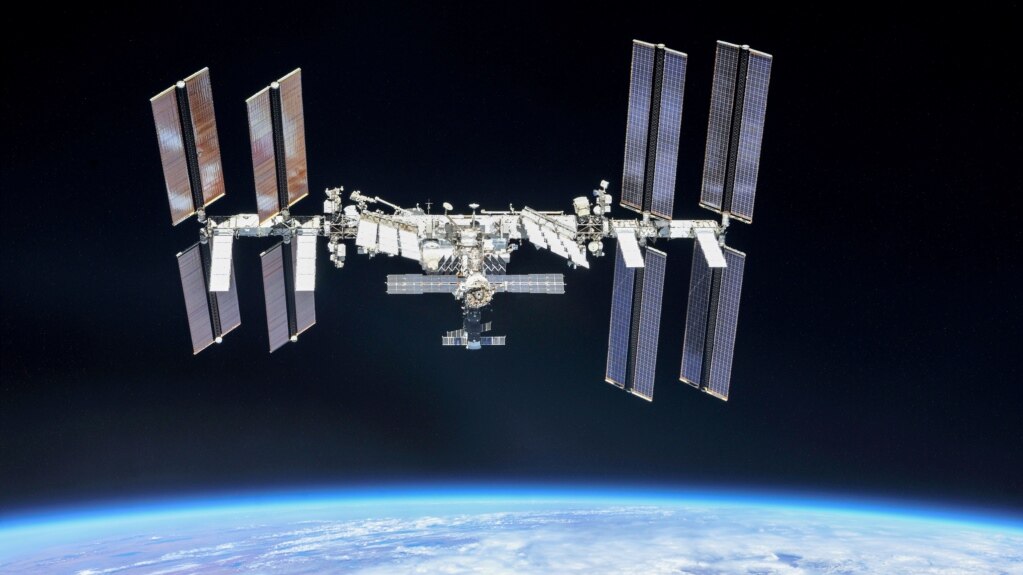The U.S. space agency NASA has chosen SpaceX to produce a vehicle to take the International Space Station (ISS) out of orbit at the end of its service life.
NASA recently announced that SpaceX will design, develop, and build the spacecraft. The vehicle will aim to guide the ISS through a final reentry into Earth’s atmosphere. NASA calls the spacecraft the U.S. Deorbit Vehicle. The agency said the deorbiting operation will take place sometime after the station’s “operational life,” which has been set for 2030.
NASA said its contract with SpaceX to build the deorbit vehicle was worth $843 million. This does not include costs to launch the vehicle. The agency said the launch would be part of a future contract.
California-based SpaceX has an existing relationship with NASA. The company has established itself as a dependable private partner of the agency since 2020. Since then, SpaceX has made regular trips to carry astronauts and supplies to the ISS.
NASA announced last year it had decided on a plan to deorbit the ISS after service ends in 2030. The agency and its international partners agreed that the orbiting laboratory would one day reach the end of its technical lifetime. The station has been continuously inhabited since November 2, 2000.
In a statement, NASA said it chose the method of deorbiting with a specially designed vehicle to provide a “safe and responsible deorbit of the ISS in a controlled manner.”
The space agency did consider other choices, or options, to retire the ISS. One option would have involved the use of several Russian spacecraft in a deorbiting operation. Another plan called for taking apart the space station in space and transporting its pieces back to Earth. Still another option was to move the ISS to a higher orbit, where it would remain out-of-service.
But NASA officials have said none of those options met the agency’s requirements for safety and effectiveness. The agency noted that while SpaceX will develop the deorbit spacecraft, NASA “will take ownership after development and operate it throughout its mission.”
Neither NASA nor SpaceX have provided further information about the planned deorbit vehicle. But Bill Spetch, a leader of NASA’s ISS program, recently spoke to reporters about it. He said the current plan is for the deorbit vehicle to be based on the design of SpaceX’s Dragon spacecraft.
Versions of the Dragon spacecraft have been used to carry astronauts and supplies to the ISS. Spetch noted that while the new deorbit vehicle would be based on Dragon, its design would require “some modifications and changes.”
Ken Bowersox is associate administrator for Space Operations at NASA’s Mission Directorate in Washington D.C. He said in a statement that having a deorbit vehicle “will help NASA and its international partners ensure a safe and responsible transition in low Earth orbit at the end of station operations.”
Bowersox noted that although the current ISS cannot continue forever, it will remain “a blueprint for science, exploration, and partnerships” until its service ends in 2030.
Once the ISS is retired, NASA plans to use privately developed space laboratories for its space research needs. The agency has already chosen several American companies to develop future space stations.
NASA has said a deorbiting operation would begin by slowing lowering the ISS’ altitude level. Officials have said this will likely be carried out by the ISS and its systems without the need for additional spacecraft.
But the final part of the operation is reentry. This will require guiding the ISS into Earth’s atmosphere to a target in an unpopulated area of the ocean.
The targeted landing spot has been identified as a place called Point Nemo in the South Pacific Ocean. This is a stretch of open water between New Zealand and the southernmost part of South America. The U.S. National Ocean Service identifies Point Nemo as the point in the ocean that is farthest from land.
NASA predicts that most ISS equipment will burn up or vaporize during the intense heat of atmospheric re-entry. But it says some dense or heat-resistant elements are expected to survive and land in the ocean.
I’m Bryan Lynn.

